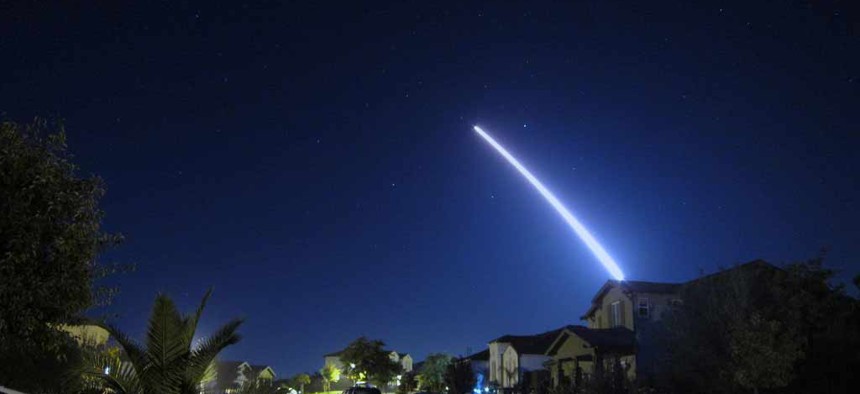
A Minuteman III ICBM is launched from Vandenberg Air Force Base, Calif. Courtesy photo by Lt. Col. Andy Wulfestieg
Land-Based Nukes Escape Drastic Cuts Under New START Treaty
But the new START arms control treaty does get a boost from the Pentagon's decision to eliminate 50 weapons from its deployed ICBM fleet. By Diane Barnes
Land-based nuclear missiles came away relatively unscathed under a new U.S. Defense Department arms-reduction proposal, amid lawmaker fears of deeper cuts.
The Pentagon on Wednesday proposed cutting the arsenal of deployed intercontinental ballistic missiles from 450 down to 400. But the United States would maintain 54 of the Minuteman 3 weapons outside of their underground silos and keep those launch facilities in "warm" status.
The reduction in deployed ground-based missiles constitutes a one-ninth reduction in that arsenal, fielded at Air Force bases in Montana, North Dakota and Wyoming.
The proposal was part of an anticipated announcement of plans to comply with the New START arms control treaty, which now leaves the United States and Russia with less than four years to cap their respective nuclear-arms deployments at a combined total of 700 deployed launch platforms, and 100 additional in reserve.
"By Feb. 5, 2018, the total deployed and non-deployed force will consist of 454 intercontinental ballistic missile (ICBM) launchers, 280 submarine-launched ballistic missile (SLBM) launchers, and 66 heavy bombers," the Defense Department said in a statement. "U.S. deployed forces will consist of 400 deployed ICBMs."
The Defense Department added that 240 submarine-launched ballistic missiles and 60 nuclear-capable bombers would remained fielded, "for a total of 700 deployed strategic delivery vehicles, the treaty limit."
Specifics on the planned force reductions became public after some members of Congress had aired worries that the Obama administration intended to eliminate a full ICBM squadron, according to Reuters.
Distributing the cuts across ICBM bases in three states would preclude the need for such a move, one government insider told the wire service, which reported the distribution of planned cuts previously along with the Wall Street Journal.



